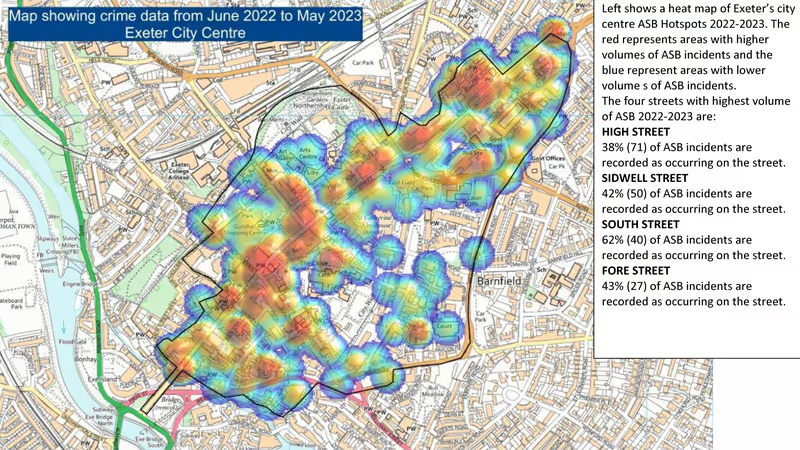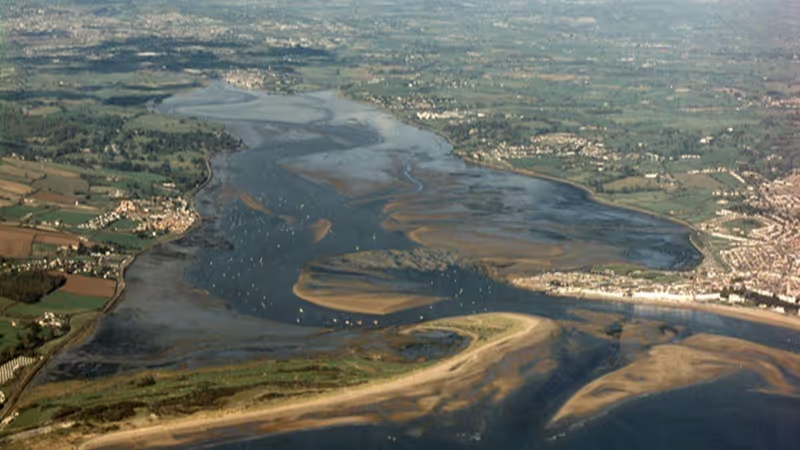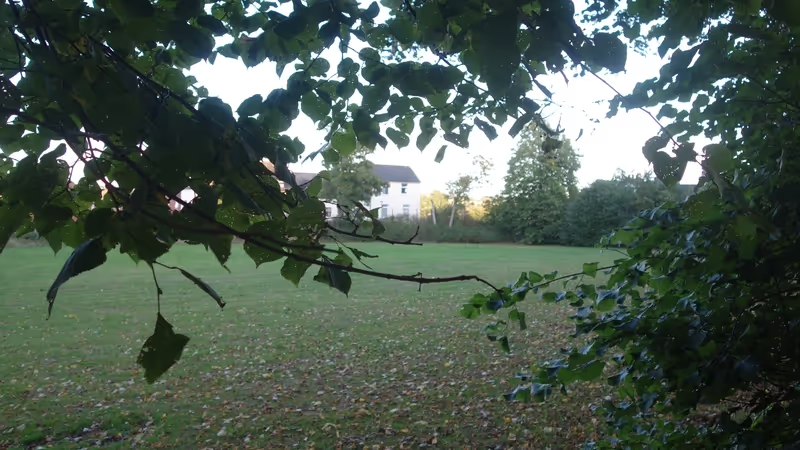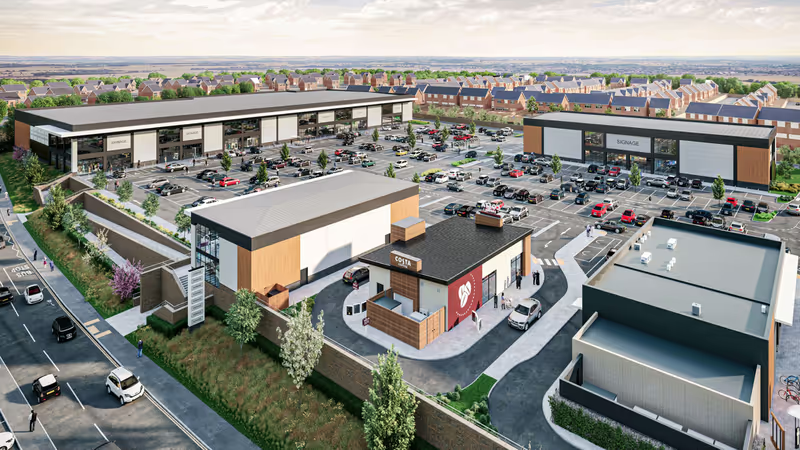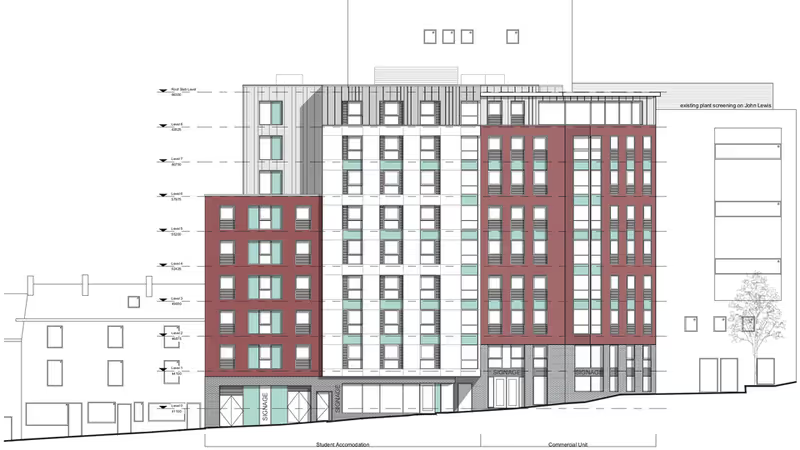The University of Exeter has applied for planning permission to develop around 1,250 new student bedrooms on the north west corner of its Streatham campus between Cowley Bridge Road and Streatham Drive.
The development plans would involve the demolition of twelve accommodation blocks, three other large buildings and a range of other structures such as bike and bin stores, 30 buildings in total. Eight new blocks would then be constructed on the fifteen acre development site.
The development would provide just under 50,000 square metres of internal floor space, around 90% of which would be for student accommodation. A new shop and café would also be included, alongside study and social space and bike stores. Parking spaces would be provided for blue badge holders.
The Birks Grange Village refectory, which was built in 1965, would be demolished and replaced with a six storey student accommodation block.
The university Estate Services Centre would also be demolished and replaced with a three and four storey student accommodation block. The facility would be relocated to a new 3.5 acre site on the north side of the campus near the Belvidere Meadows nature reserve. Vehicle access would be via Rennes Drive.
The Clydesdale and Nash Grove accommodation buildings, which were built between 1989 and 1992, would all be demolished and replaced with six new student accommodation blocks between three and eight storeys tall. Several of these buildings will be much taller than the existing blocks.
In addition, five of the fifteen Birks Grange Village accommodation blocks, which were built between 2005 and 2011, would be renovated to improve their energy efficiency.
 Clydesdale and Birks development demolition plan. Image: Willmore Iles.
Clydesdale and Birks development demolition plan. Image: Willmore Iles.
Planning firm WYG (which has since adopted the name of its parent company Tetra Tech) was appointed by the university in September 2019 to prepare the application. It performed a two day consultation exercise at the university Innovation Centre in February 2020, which the university then followed with a web-based consultation in late February to mid-March.
Issues raised included high levels of visual impact, student bedrooms overlooking nearby residential properties, loss of light in those properties and the impact of lighting and noise. Two of the twelve planned blocks were subsequently reduced in height.
37 of 38 comments subsequently submitted by members of the public were objections to the development. Noise and light impact were cited repeatedly. One resident said: “The noise levels currently are extremely bad … the noise and light generation is going to be horrendous”.
Another said: “The increase in student numbers, density and activity in recent years has already had a noticeable and detrimental effect” citing “numerous” instances of drug use, sexual activity and anti-social behaviour in Grafton Road at night. Another resident mentioned: “a lot of partying and noise (loud music) which goes on well into the night which will only increase with this massive increase in number of residents on the site”.
Several people identified inadequate drainage in the area as a risk, saying existing sewers were unable to cope with heavy rainfall last year, and others raised concerns about environmental impact, saying owls, deer, badgers, bats and foxes all live in affected areas.
Michael and Ann Head, both University of Exeter alumni, highlighted the failure of the planning statement and ecology report to mention Grassways Woods, a nature reserve owned by the university. They also said the planned single drop-off point for taxis and delivery vehicles in a complex of more than a thousand students looked “unworkable”.
 Clydesdale and Birks development illustrative view. Source: Design & Access Statement.
Clydesdale and Birks development illustrative view. Source: Design & Access Statement.
Local residents Anne and Rod Barnes said: “This area of Duryard already has the highest ratio of students to residents in the city and the increasing dominance of the university has already had a massive impact on the local community”.
They said five of seven houses in adjacent Glenthorne Road had recently been converted into student HMOs, adding that this process “obviously becomes self-perpetuating and will spread to other roads in the locality. A few years ago Glenthorne Road was a socially and demographically mixed and active community.”
They also said: “When the university talks about the community consultation they’ve undertaken on the current proposals it would be more honest and accurate to say they are consulting the remnants of communities which have been depleted by their dominance in the area”, and expressed a “sense of depressed fatalism about the council’s history of viewing the university’s interests as always paramount”.
One evidently elderly resident who has lived nearby for 48 years said: “This was such a wonderful area but now it will be torn apart.”
The new Clydesdale and Birks development would be more than 50% larger than the 32,000 square metre East Park development which is close to completion on the other side of the campus. Student accommodation blocks there range from three to eight storeys in height and include nearly 1,200 bedrooms.
Further development planned for Streatham campus at Moberly and Spreytonway includes another 300 student bedrooms.
Exeter City Council will consider the application at a later date. More details are available on the city council planning portal.
